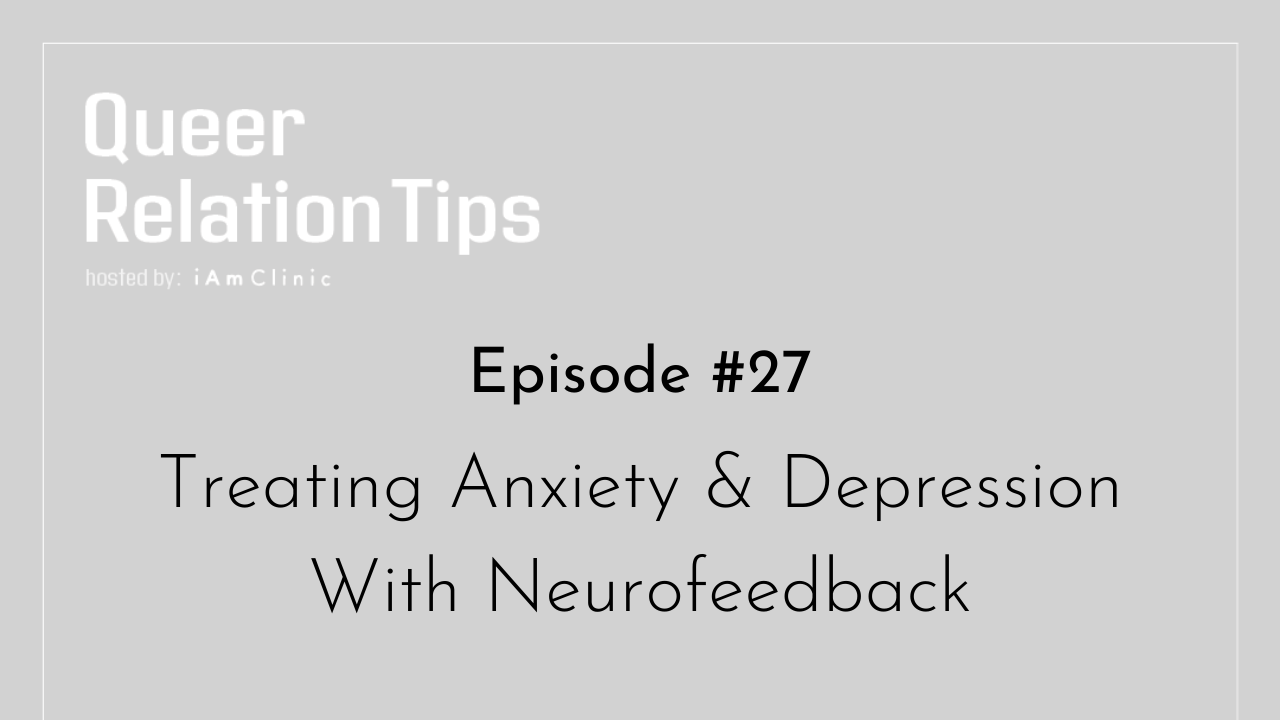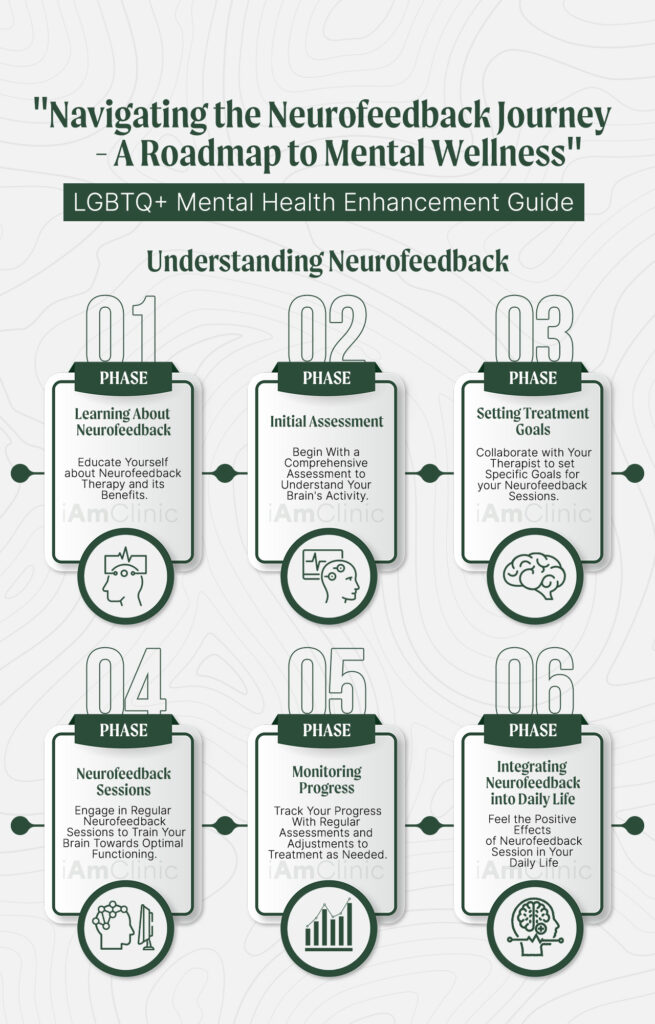Table Of Contents
Unlocking the Power of Neurofeedback: A Path to Healing and Resilience
Isaac Archuleta’s Personal Journey:
Accessibility and Remote Options:
Unlocking the Power of Neurofeedback: A Path to Healing and Resilience
In today’s fast-paced world, many of us struggle with various mental health challenges, from anxiety and depression to trauma and relationship issues. The LGBTQ+ community, in particular, often faces unique stressors and traumas that can impact their well-being. However, there’s a groundbreaking therapy that is changing lives and offering newfound hope: neurofeedback. In this blog post, we’ll explore the transformative potential of neurofeedback, as discussed in the “Queer Relation Tips” podcast featuring Isaac Archuleta, the founder of I Am Clinic, and neurofeedback specialist Katie Cass.
The Power of Neurofeedback:
Neurofeedback, a non-invasive therapy, offers a fresh perspective on treating a wide range of issues, from anxiety and depression to autism and seizures. It harnesses the brain’s incredible ability to change and adapt by targeting specific areas and adjusting their electrical amplitudes. This transformation can be life-changing, allowing individuals to live more authentically and fully.
Isaac Archuleta’s Personal Journey:
Isaac Archuleta shares his personal experience with neurofeedback, shedding light on how this therapy has transformed his life. From a traumatic childhood incident to anxiety-driven mornings and years of struggling, Isaac found himself trapped in a cycle of fear and worry. Traditional therapies, including medication and talk therapy, provided some relief, but it wasn’t until he discovered neurofeedback that he experienced profound change.
How Neurofeedback Works:
Neurofeedback involves monitoring the brain’s electrical activity through EEG (Electroencephalogram) scans. During sessions, patients simply watch a movie while the software provides real-time feedback. If the brain operates in an ideal state, the movie appears vibrant and clear; otherwise, it becomes less vivid or even staticky. This process conditions the brain to function optimally, reducing symptoms and improving overall mental health.
The Redemptive Quality:
Neurofeedback has a redemptive quality, allowing individuals to shed the protective layers they’ve built up over the years. This therapy doesn’t change who you are; instead, it lets your true self shine through. As the brain becomes calmer and more resilient, people find themselves better equipped to engage with life authentically, free from the shackles of constant anxiety or depression.
Accessibility and Remote Options:
One of the most exciting developments in neurofeedback is the recent FDA approval of a remote headset. This means that individuals from remote or underserved areas can access neurofeedback therapy from the comfort of their homes. No matter where you are in the world, you can benefit from this life-changing treatment.
Final Thoughts
Neurofeedback is a transformative therapy that offers hope and healing to individuals struggling with various mental health challenges, including those in the LGBTQ+ community. Isaac Archuleta’s journey is a testament to the power of neurofeedback in unlocking one’s true potential. Whether you’re dealing with anxiety, depression, or other issues, consider exploring the possibilities of neurofeedback therapy. It may be the key to living a more authentic and fulfilled life.
Episode Description
In this episode, Jamie Leach has a conversation with Isaac Archuleta and Katie Cass about neurofeedback training, what it is, how it works, and how it might just be the answer to your mental health struggles.
Interested in counseling and/or neurofeedback training with iAmClinic? Fill out a contact form at, https://www.iamclinic.org/contact/
Episode Links
The Body Keeps the Score by Bessel van der Kolk, M.D.
A Symphony in the Brain by Jim Robbins






